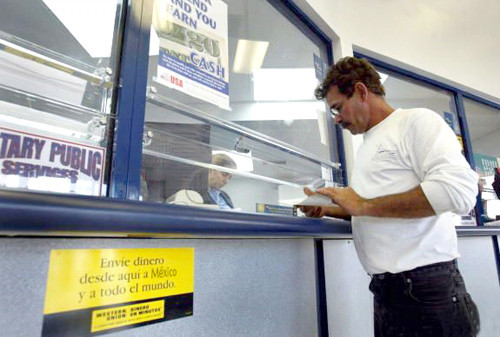Bank Cuts May Force Immigrants To Pay More to Send Remittances

Pablo wants his family back in the Dominican Republic to get every penny he can send them. So the 62 year old, who lives in New York, gives his ATM card and PIN to his sister back home. By depositing money in a bank account here, and giving his sister access to withdraw funds from that account in the D.R., he estimates he can save about $5 a month in the fees it would otherwise cost to wire the money from a storefront.
“That is worth it to me,” Pablo, an electrician and car service driver, told the International Business Times. In describing the “trick,” as he called it, he requested that his last name not be published, and declined to provide the name of the financial institution where he banks. But the Staten Island resident said he knows a score of other immigrants who also share ATM cards and PINs with family abroad as they contribute to the tens of billions of dollars in remittances sent each year from the United States. (The Bureau of Economic Analysis puts the figure at $38 billion, and the World Bank pegs it at $51.1 billion.)
Pablo deposits $50 to $100 at a time for his sister to use.
“It’s not big money,” he said. “It’s just the way I can help a little.”
Pablo uses a work-around, but immigrants who continue to rely on money wire services may have fewer and fewer options to do so cheaply. As the industry comes under heavier regulatory pressure related to terrorism financing and drug-money laundering, JPMorgan Chase and Bank of America have halted their inexpensive transfer services between the United States and Mexico, and Spain’s BBVA may want to sell its unit that wires money throughout Latin America, the New York Times reported.
“Citigroup’s Banamex USA unit has now closed many of its branches in Texas, California and Arizona that catered to Mexicans living in the United States and stopped most remittances to Mexico as it faces a federal investigation related to money laundering controls," the Times reported.
The trend among big banks could end up countering a five-year decline in remittances costs that was fostered by increased industry competition. As Daniel Ayala, the head of global remittance services at Wells Fargo, put it to the Times: “If you are the only game in town, you may be able to charge a premium.”
On Monday afternoon, Otto, a 28-year-old waiter from Tlaxcala, Mexico, wrapped up a money transfer transaction at store in Brooklyn’s Sunset Park neighborhood, an enclave of Mexican immigrants. Otto, who declined to give his last name, said he paid $8 to send $300 back home, and he had no quarrel with the fee. He appreciated that he could send the funds to his family’s Banorte bank account in Mexico.
“A bank is better,” he said. “More secure.”
For now, he's happy with the arrangement. But as U.S. banks worry about compliance -- and competition for immigrants' business shrinks -- there may be a price down the road.
© Copyright IBTimes 2025. All rights reserved.





















